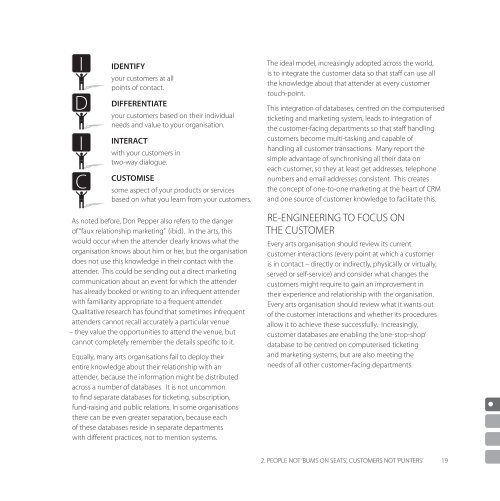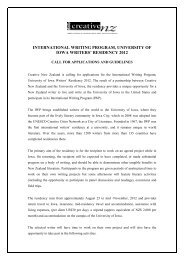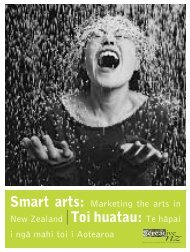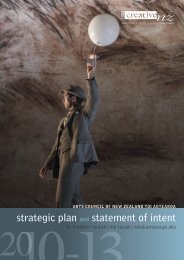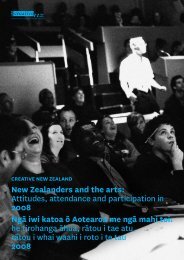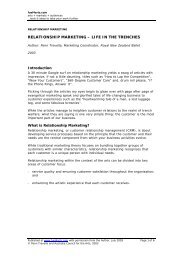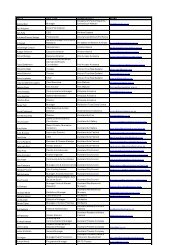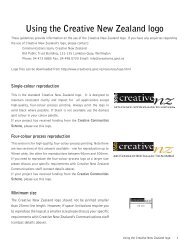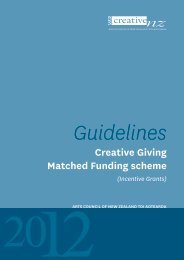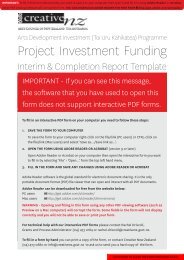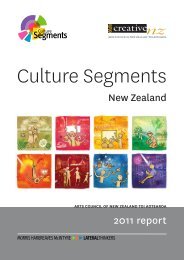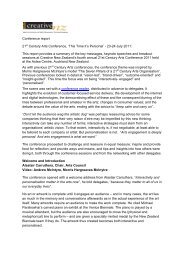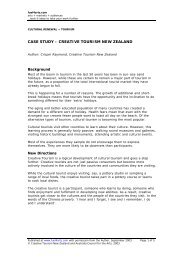FULL HOUSE Turning Data into Audiences - Creative New Zealand
FULL HOUSE Turning Data into Audiences - Creative New Zealand
FULL HOUSE Turning Data into Audiences - Creative New Zealand
Create successful ePaper yourself
Turn your PDF publications into a flip-book with our unique Google optimized e-Paper software.
I<br />
D<br />
I<br />
C<br />
IDENTIFY<br />
your customers at all<br />
points of contact.<br />
DIFFERENTIATE<br />
your customers based on their individual<br />
needs and value to your organisation.<br />
INTERACT<br />
with your customers in<br />
two-way dialogue.<br />
CUSTOMISE<br />
some aspect of your products or services<br />
based on what you learn from your customers.<br />
The ideal model, increasingly adopted across the world,<br />
is to integrate the customer data so that staff can use all<br />
the knowledge about that attender at every customer<br />
touch-point.<br />
This integration of databases, centred on the computerised<br />
ticketing and marketing system, leads to integration of<br />
the customer-facing departments so that staff handling<br />
customers become multi-tasking and capable of<br />
handling all customer transactions. Many report the<br />
simple advantage of synchronising all their data on<br />
each customer, so they at least get addresses, telephone<br />
numbers and email addresses consistent. This creates<br />
the concept of one-to-one marketing at the heart of CRM<br />
and one source of customer knowledge to facilitate this.<br />
As noted before, Don Pepper also refers to the danger<br />
of “faux relationship marketing” (ibid). In the arts, this<br />
would occur when the attender clearly knows what the<br />
organisation knows about him or her, but the organisation<br />
does not use this knowledge in their contact with the<br />
attender. This could be sending out a direct marketing<br />
communication about an event for which the attender<br />
has already booked or writing to an infrequent attender<br />
with familiarity appropriate to a frequent attender.<br />
Qualitative research has found that sometimes infrequent<br />
attenders cannot recall accurately a particular venue<br />
– they value the opportunities to attend the venue, but<br />
cannot completely remember the details specific to it.<br />
Equally, many arts organisations fail to deploy their<br />
entire knowledge about their relationship with an<br />
attender, because the information might be distributed<br />
across a number of databases. It is not uncommon<br />
to find separate databases for ticketing, subscription,<br />
fund-raising and public relations. In some organisations<br />
there can be even greater separation, because each<br />
of these databases reside in separate departments<br />
with different practices, not to mention systems.<br />
RE-ENGINEERING TO FOCUS ON<br />
THE CUSTOMER<br />
Every arts organisation should review its current<br />
customer interactions (every point at which a customer<br />
is in contact – directly or indirectly, physically or virtually,<br />
served or self-service) and consider what changes the<br />
customers might require to gain an improvement in<br />
their experience and relationship with the organisation.<br />
Every arts organisation should review what it wants out<br />
of the customer interactions and whether its procedures<br />
allow it to achieve these successfully. Increasingly,<br />
customer databases are enabling the ‘one-stop-shop’<br />
database to be centred on computerised ticketing<br />
and marketing systems, but are also meeting the<br />
needs of all other customer-facing departments.<br />
2. PEOPLE NOT ‘BUMS ON SEATS’, CUSTOMERS NOT ‘PUNTERS’<br />
19


